Cobweb on the heath, 17 May 2024.
Hello and welcome to this full moon in Sagittarius edition of Bracken & Wrack. And, delightfully, we are still in the merry month of May. Here in North Norfolk I can’t think of a month more exhilarating to move through as the green grows each day and the sap spirals upwards.
Most of the sources I consulted seem to refer to this moon as the Flower Moon, and sure enough the lane-side elder trees are gradually unfurling their tiny buds in great green clusters revealing creamy white and a cloud of pollen. The serried ranks of foxgloves in the garden and on the heath are revelling in a first show of colour, their cascades of freckled bells poised to ring out their joyous summer song. A yearly wonder to me is the opening of the sweetly scented English roses here at The Old Shop, with Desdemona and Boscabel leading the way and enticing us through the front garden gate.
Other names for this moon I found in my books are Merry Moon given by Michael Howard in Liber Nox (and isn’t this just perfect) and Fiona Walker-Craven’s Hare Moon. Now, I am never going to argue with anything named after the beautiful hare. But I have seen hares now and again at all times of the year so that of the two, I would definitely go with Merry. Having said that, after turning out of a dark field after an event on Saturday evening to head home along country lanes I spotted no fewer than three hares in different places, leaping around under a growing May moon.
This Moon falls in Sagittarius, and I checked to see what the astrologers feel this tide might hold for us all. Kirsty Gallagher, Sunday Times bestselling author of Lunar Living tells us that, while the last full moon in Scorpio came to bring alchemy and transformation and to reveal the pathway forwards, this Moon will help us to embody our new beliefs and to find joy in our journey.
This full moon, Kirsty says, is going to illuminate how far we’ve come and help us to see things in a new and different way as we travel on. It seems that we are finally learning the lessons and embodying the wisdom of all the intensity we’ve gone through during the past months and everything that has brought us to this moment.
Maytide magic in the wild dunes, 4 May 2024.
On that high note, I think I had better do a little Bracken & Wrack housekeeping. Over the past several months I have found myself spending more and more hours researching and writing this newsletter, with the result that it takes longer and longer to read! I love the thought that I am producing what is almost a mini book (and believe me I edit as carefully as if it were) but over the summer I am sure that my lovely readers have myriad things to do and places to go and don’t really need something to curl up by the fire with. I do love producing the newsletter - in fact it’s the fulfilment of a childhood dream - but over the summer I am going to try to restrain myself and produce a slimmed-down version of Bracken & Wrack which will be more digestible for us all.
Expect more seasonal photos but fewer essays, and intermittent additions to existing series rather than committing to a new episode in every issue. Never fear though: the usual mix of landscape, magic, folklore, archaeology and wild antlered saints will still dance together in my cauldron set between the heath and the sea. And of course there will still be recipes sprinkled like sugar-plums into the mixture here and there.
A gift for the sea goddess, Old Hunstanton, 11 May 2024.
So to start things off, let’s set ourselves up for the summer with a lovely cleansing bath to wash away the last traces of all that’s been holding us back from our wilder selves.
MAID MARIAN’S BATH FOR THE OPENED GATES OF SUMMER
Gather two handfuls of oak leaves and one of the leaves of the elder at Anael’s hour (between 9am and 10am) on a fine spring morning. Put them into your bath with a drop of lavender oil, and you will rise from it fresh, serene and beautiful.
The Victorian Yorkshire wise woman whose spell this is would have had a bathtub rather than a shower. If, like me, you always step into a shower you could adapt this by hanging the bunches of leaves under the running water and using a lavender shower gel or oil. Alternatively you could put the ingredients into a bowl of warm water pour it over yourself in the shower. There’s usually a way.
Maid Marian and Robin Hood’s den under the oaks. Wreningham, Norfolk, 17 May 2024.
SNIFFING THE SALT AIR
As the days lengthen and the seashore calls ever more strongly, you may like to try combining some of the same essential oils that I used to create the scent for my Sea Charm candle of three years ago. When you try to separate the elements of the seductive aroma that greets you on the shoreline it seems an impossible task. What I did was to imagine being back on the smooth sand where the sea, sky and land meet - in this life or a past one - and then turned that vision into a story.
If you try blending a few drops of each of these oils you might like to float them in water over a tea light or put them into a carrier oil for massage or ritual connected with the sea. Or, of course, use scent soy or eco rapeseed & coconut wax in candle-making. Although for this, be warned that you will need far more drops than you might think as you’re using essential oils with their gentle therapeutic properties and not harsh chemical-based fragrance oils.
When designing and making my seasonal story candles I chose to combine quite a few oils in each one. Sea Charm was actually the most modest in that way, but don’t be put off if you haven’t got all the listed oils as it’s definitely worth experimenting with any three or four of them.
‘I sit back on my sandy heels and gaze at the mandala that has just emerged from under my hands. Half an hour beforehand I’d been scanning the shoreline for seawashed trinkets; amulets to lay out in concentric circles like so many tossed-pebble ripples. Seaweed, driftwood, smoothed shell, sparkling quartz, whelk whorls.
The tide is flowing. No time to lose. Striking a match against my cupped hand I light my lantern in the shelter of a rock and set it in the centre. The flame flares and gutters then settles to a flicker. A primal beacon fire between the edges of land and sea.
The waves draw closer. Soon the sea will begin to tease my treasures. I sit, entranced by the shadowy blue-green glow, hugging my knees. Then my head is up, sniffing the salt air like a ship’s cat and trying to separate the tangle of scents drifting into my nostrils with the tide.
Invigorating BLACK PEPPER is the first aroma I pick up from the briny deep. It swirls and eddies with those of GRAPEFRUIT and BERGAMOT, sweet-sharp reminders of those oak-hearted days when the fight against scurvy was every bit as real as any skirmish with marauding pirates. From unseen exotic shores drifts a hint of HO WOOD over the waves. It speaks of trade routes, of pioneering, of adventure and danger. Its resins dance with those of homely PINE NEEDLES from the heath-topped cliff above me, joined by JUNIPER that sings of skylarks and freedom, while offering itself as a purifying smoke for the midsummer bonfires that blaze on every promontory.
The first tiny wave laps the outermost sea-ring, testing its strength. I pick up the lantern and turn for home.’
Beach mandala with spontaneous finds, Happisburgh, Norfolk.
Just occasionally, you come across a poem so beautiful it almost cuts you in two to read it. This is one I have just found, and that was its exact effect. I am not sure about the collection of poems as a whole as it’s written from the perspective of an angler, but this poem, well, what can I say?
All night a music
Like a needle sewing body
And soul together, and sewing soul
And sky together and sky and earth
Together and sewing the river to the sea.
In the dark skull of the valley
A lancing, fathoming music
Searching the bones, engraving
On the glassy limits of ghost
In an entanglement of stars.
In the dark belly of the valley
A coming and going music
Cutting the bedrock deeper
To earth-nerve, a scalpel of music
The valley dark rapt
Hunched over its river, the night attentive
Bowed over its valley, the river
Crying a violin in a grave
All the dead singing in the river
The river throbbing, the river the aorta
And the hills unconscious with listening.
Ted Hughes, ‘In the Dark Violin of the Valley’, River
The alder carr, 20 May 2024.
THRILLINGLY BLUE AND SPECKLED
Nest in the bay tree, 14 May 2021.
Let me tell you about my blackbird. If you can ever have the audacity to call a wild creature ‘yours’. But she and I have somehow become good friends, and when we look each other in the eye I don’t think I’m imagining the tender understanding that passes between us.
I first became aware of her presence in the garden during another spring, four years ago. I was hanging out the laundry next to the big bay tree when I noticed a nest, just below my eye level, tucked among the branches behind a veil of glossy leaves. But it was when the nest was re-used three years ago that I really became intimate with my girl. That year, the first I knew of her return was the sight of a single egg, thrillingly blue and speckled.
Then I would catch glimpses of the blackbird’s beady eye as she sat patiently fluffing out her nest-coloured feathers, and I began to realise that she felt utterly at ease in my company. Pegging out the washing less than a metre from where she sat with her treasure, I began talking to her; even parting the branches so that we would see each other more clearly. Day by day the number of summer-blue eggs grew, resting at five. Could their exquisite shape be any more potent argument for the existence of a conscious universe?
Often I would slip out of the back door to have a word with the blackbird and let her know I was thinking of her in her solitary role. When she was not on the nest I would gaze, rapt, at the *quincunx of eggs, marvelling at the latent life within those shells. I was even lucky enough to watch some of the eggs hatching, as my girl was away from the nest for some of this breathtaking process.
After that, I witnessed her many, many visits to and from the nest that were essential to keep the babies satiated on their diet of the tiniest worms from the vegetable patch. As I worked on those beds myself, squatting on the wood chip paths that run between them, she would hop a merry dance in search of these morsels, often fixing me with her elderberry eye and edging closer and closer. I could have reached out and stroked her earthy feathers had I felt it appropriate to show such familiarity.
Once her beak was full from end to end with its neat row of wriggling thread-like worms she would head back to the bay tree where upturned tiny beaks were chirping noisily for their next meal.
Three broods my blackbird raised there that year, but last year the nest lay empty, disintegrating, the last egg that had failed to hatch eventually disappearing too. Gradually it filled with brown leaves and I felt this was the end. That was it. She would not be back. How long do blackbirds live, anyway?
But - oh joy - a few weeks ago I was pegging out PE kit close to the bay when I noticed fresh repair work to the nest: fine pale twigs woven tightly into the circle. And there was that shining eye gazing at me while I smoothed out the Zumba leggings. Yes, it was her, there could be no mistake. Not sitting on eggs, I soon discovered, but keeping already-hatched babies warm.
There was no movement from the bottom of the nest and when I had a chance to look there was no way of telling how many there might be. Not many, I was sure, and very small. In fact frankly I wasn’t even sure that they were alive. But I had to give my girl more credit than that; a creature far more in tune with her bodily instincts and the natural rhythms of life than any of us can ever hope to be. She would certainly not be spending patient hours sitting with cold bodies.
My blackbird and I have resumed our old friendship. Several times each day I will go and see her for a moment or two and we exchange our energies. Indeed I would call it love. Certainly I find myself telling her I love her and singing her praises for her patience, focus, dedication, wisdom and knowing. Then in the evening, perhaps I am cooking or washing up when suddenly a joyous peal of blackbird song trills its way through the open back door and sends me running outside. My blackbird is singing her heart out on hedge, tree or trellis and the nestlings are shuffling a little or fast asleep side by side, beaks almost touching. There are just two of them, and now they fill the nest, the size of adults although still much fluffier.
Very soon now, I may be lucky enough to see them perched on the bay boughs, blinking in the unfiltered light, stretching their now fully feathered wings and launching themselves into the wide rose-and-blackcurrant-scented unknown.
There she is, my lovely blackbird. 26 May 2021.
*A quincunx is a pattern of five objects, four in the corners and one in the middle like the five on a dice. Actually the eggs in the nest didn’t form that pattern, but there were five of them and it’s a lovely word to say :-) The word quincunx always reminds me of Sir Thomas Browne (1605-1682), famous Norwich polymath who delved into science, mathematics, religion, the esoteric and the workings of the natural world. In 1658 he published his essay ‘The Garden of Cyrus, or The Quincuncial Lozenge, or Network Plantations of the Ancients, naturally, artificially, mystically considered’. In it, Browne elaborates upon evidence of the quincunx pattern in art, nature and mystically as evidence of ‘the wisdom of God’. Although writing about the quincunx in its geometric meaning, he may have been influenced by astrology, as the astrological meaning of quincunx (an aspect of 150 degrees, equivalent to five zodiacal signs) was introduced by the astronomer Johannes Kepler in 1604.
Finally a word to say that I haven’t forgotten that I mentioned my great wish to tell the forgotten and overlooked story of St Pega (well, my interpretation of it). That project has taken a while to get off the ground for lots of reasons but I am determined to write about, and honour, this feisty Anglo-Saxon anchorite who lived alone in the wild fens and who has been all but airbrushed out of her brother St Guthlac’s story.
One of the mysteries of Pega is her secret link with swans - more of that soon - but for now I thought I would finish with an image of a pair of swans at the lake I used to visit for daily solace when I was in limbo between homes and lives. It was originally taken on 21 May 2018, but I have done a bit of editing magic on it (Snapseed is my new obsession since I have been led astray into its own mysteries). I hoped that working with these swans again would give me the push I need to take a deep breath and dive in. And I think that it has, so I am committing to getting my Pega project off the ground here and now, as I share the image with you.
Swans at Booton Clay Pit, 21 May 2018. Altered image, May 2024.
Until next time.
With love, Imogen x
Coffee at the lake, Booton Clay Pit, Norfolk, 28 May 2018.



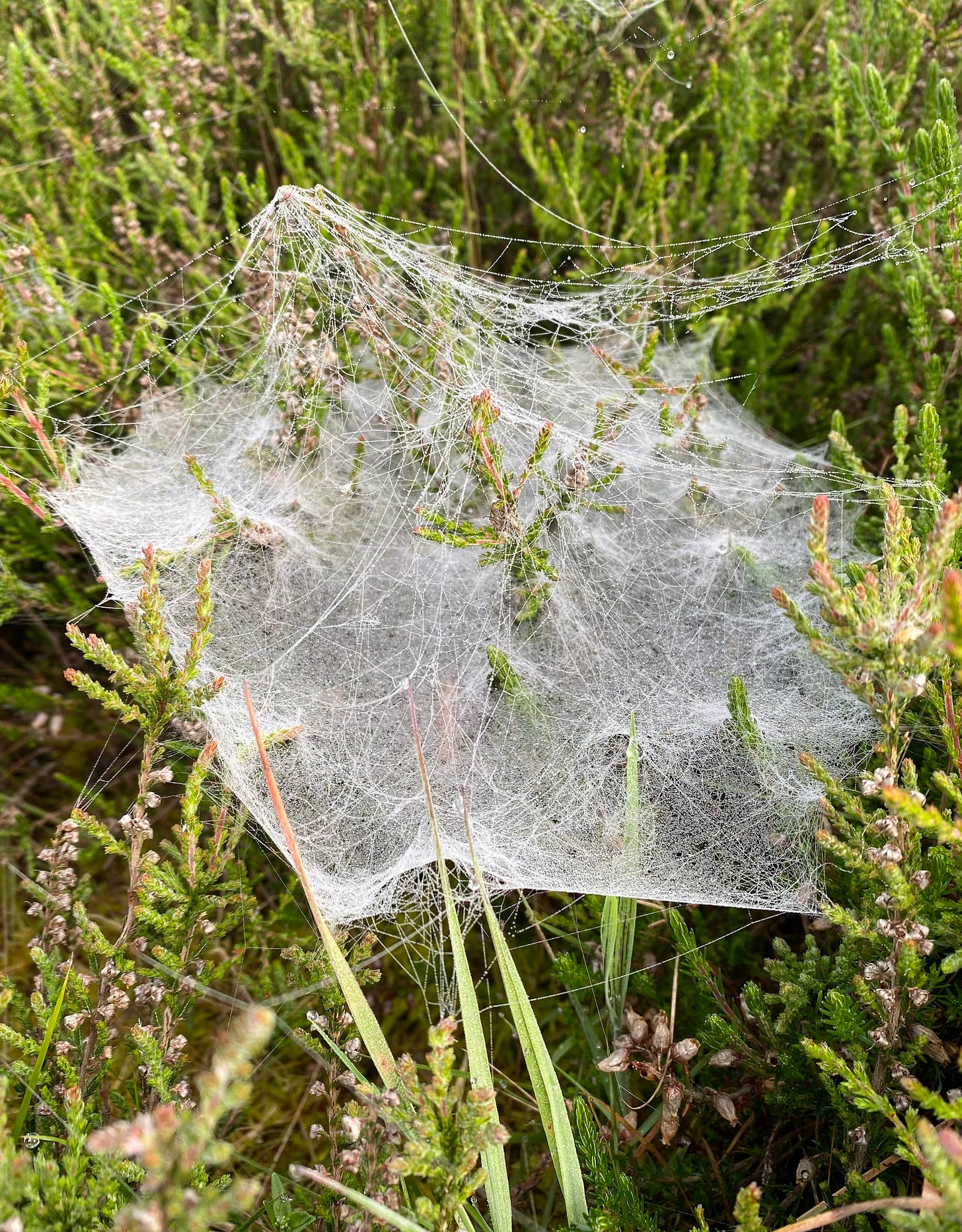

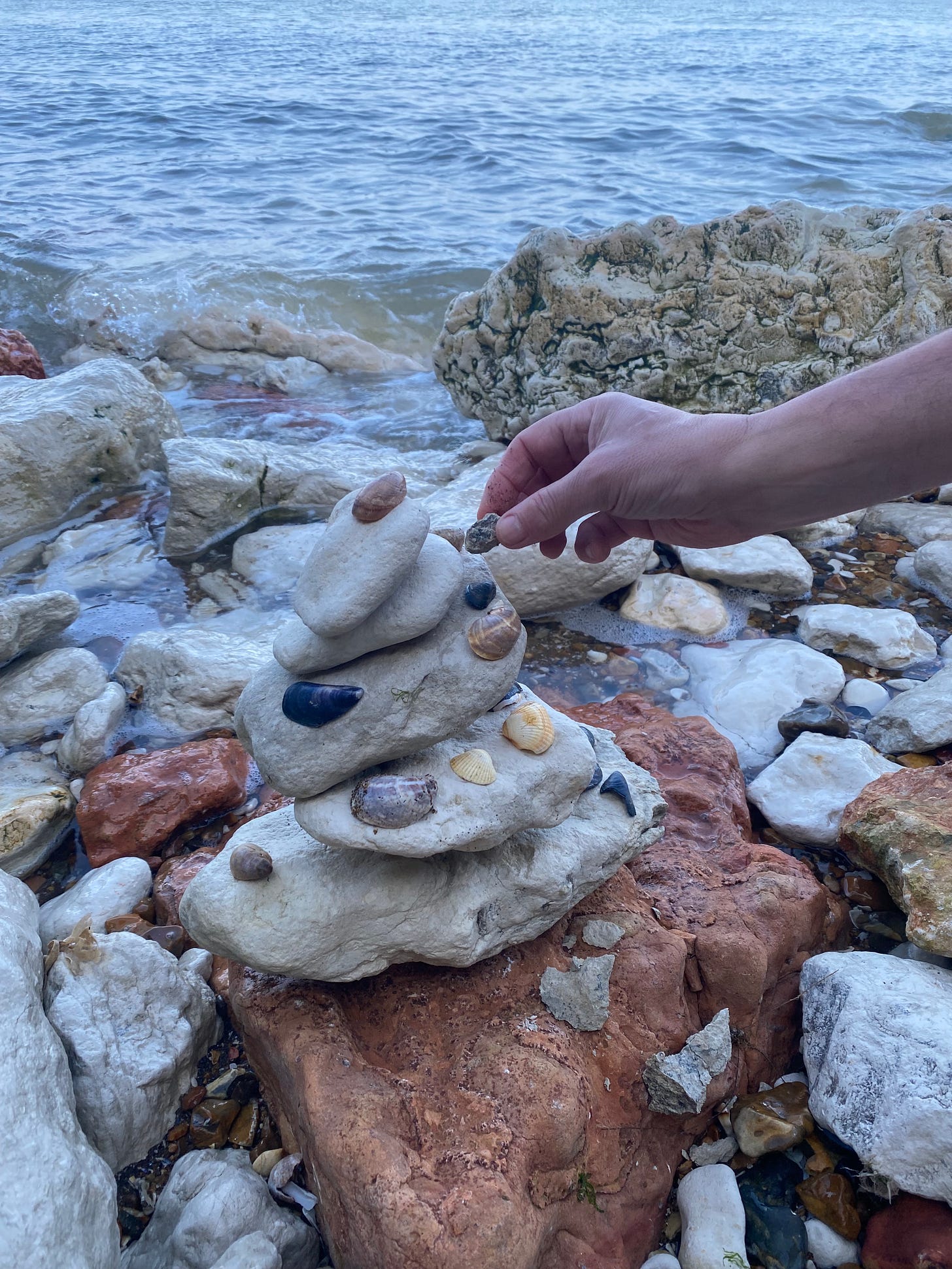
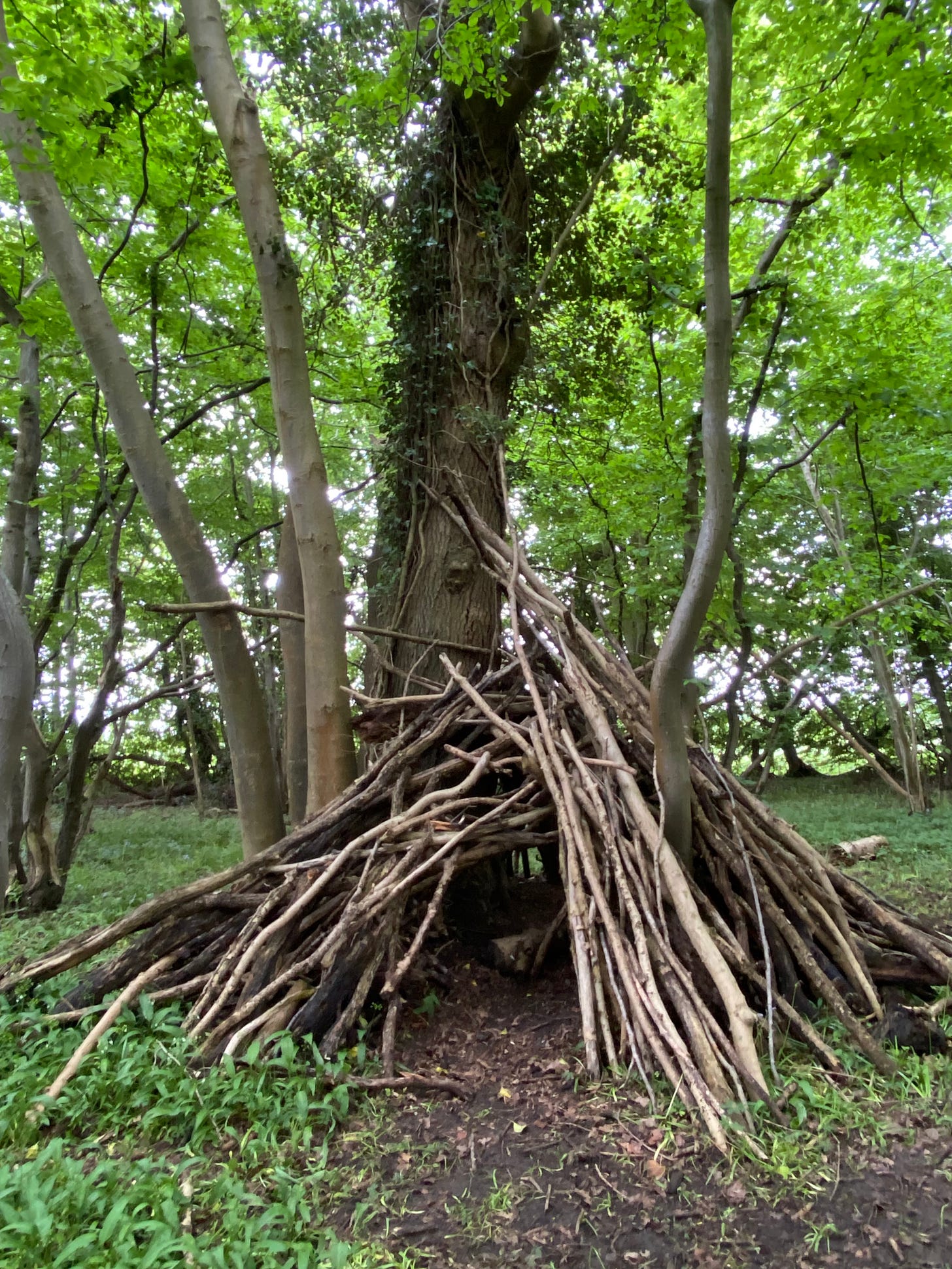


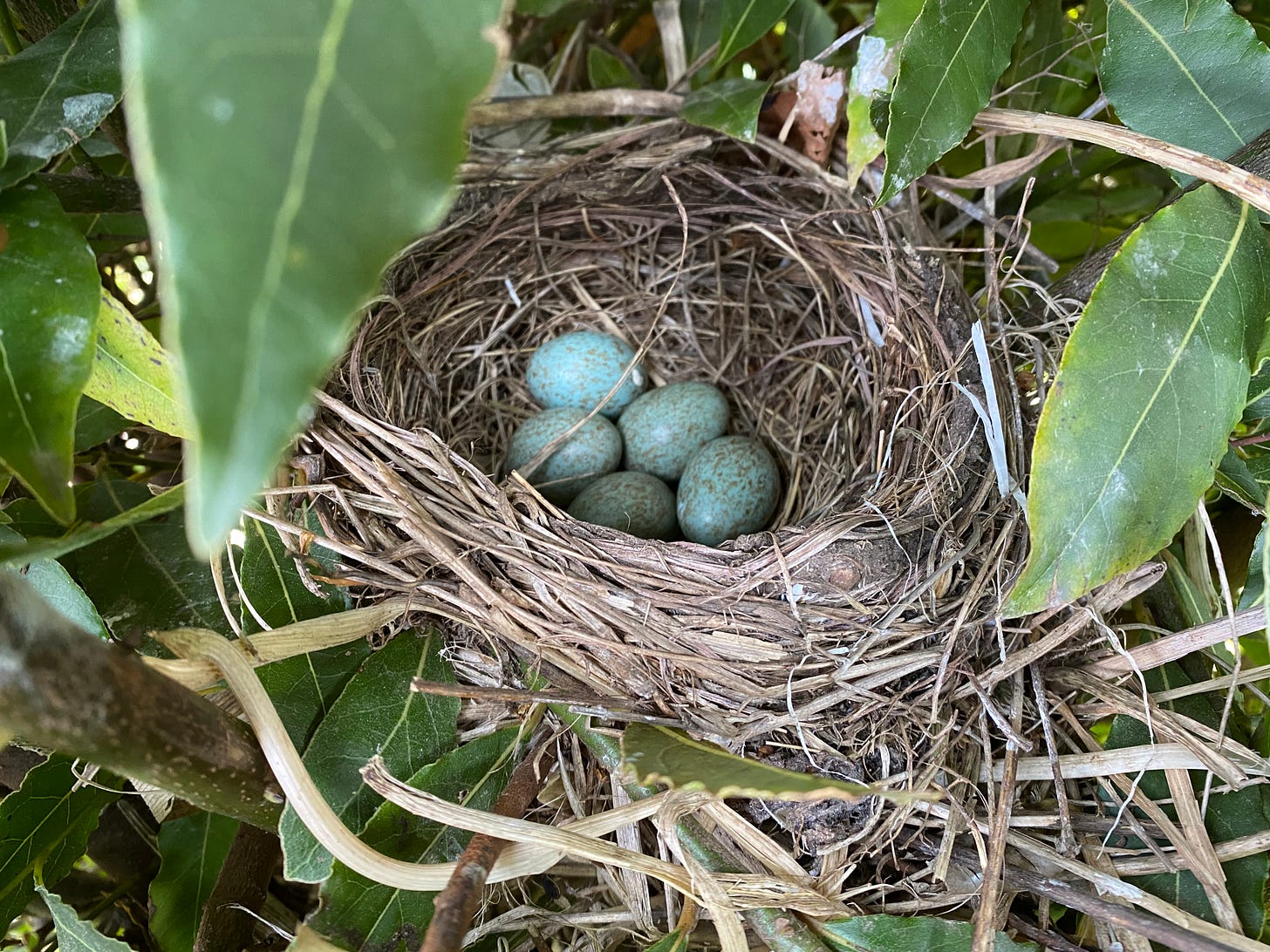
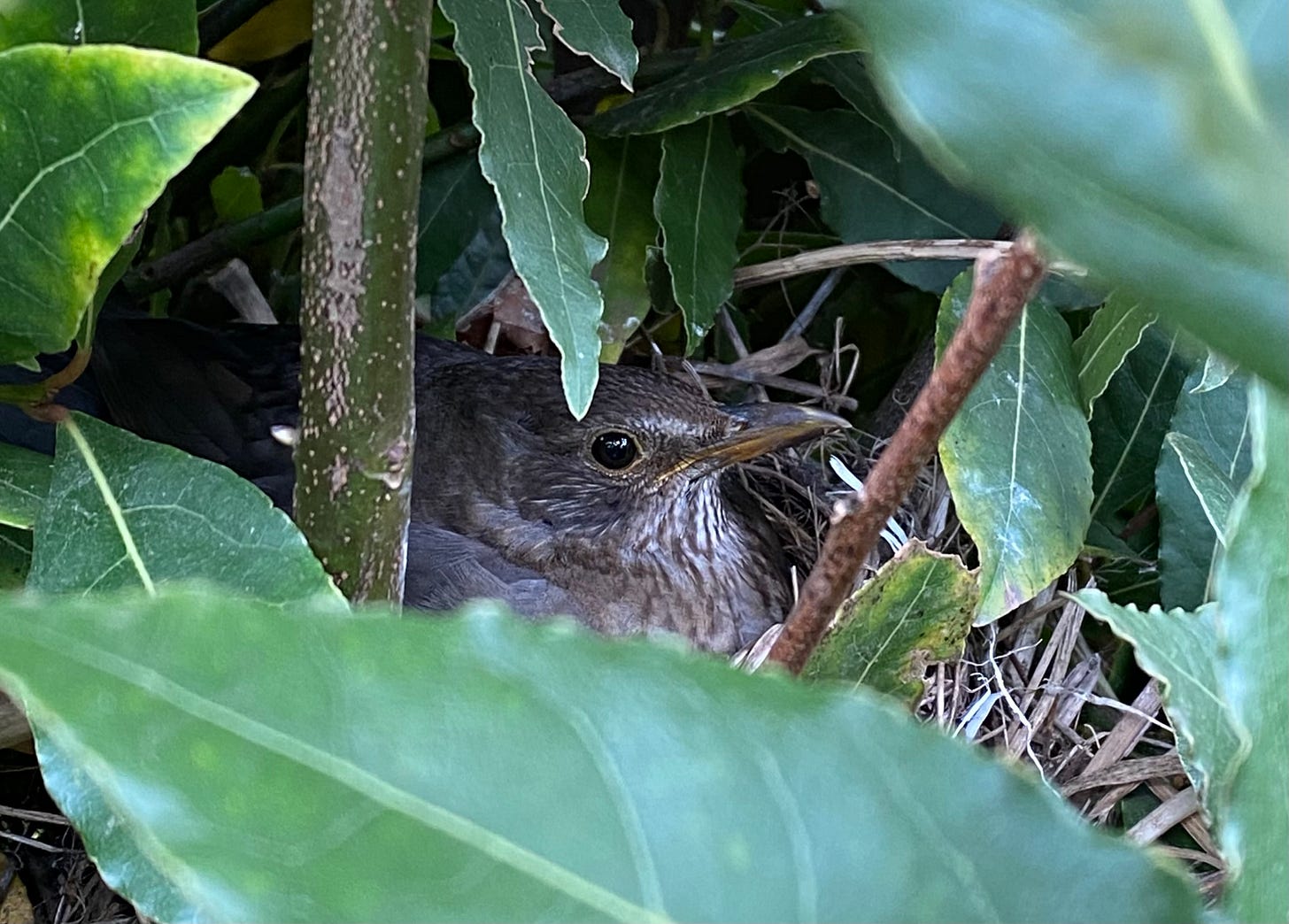

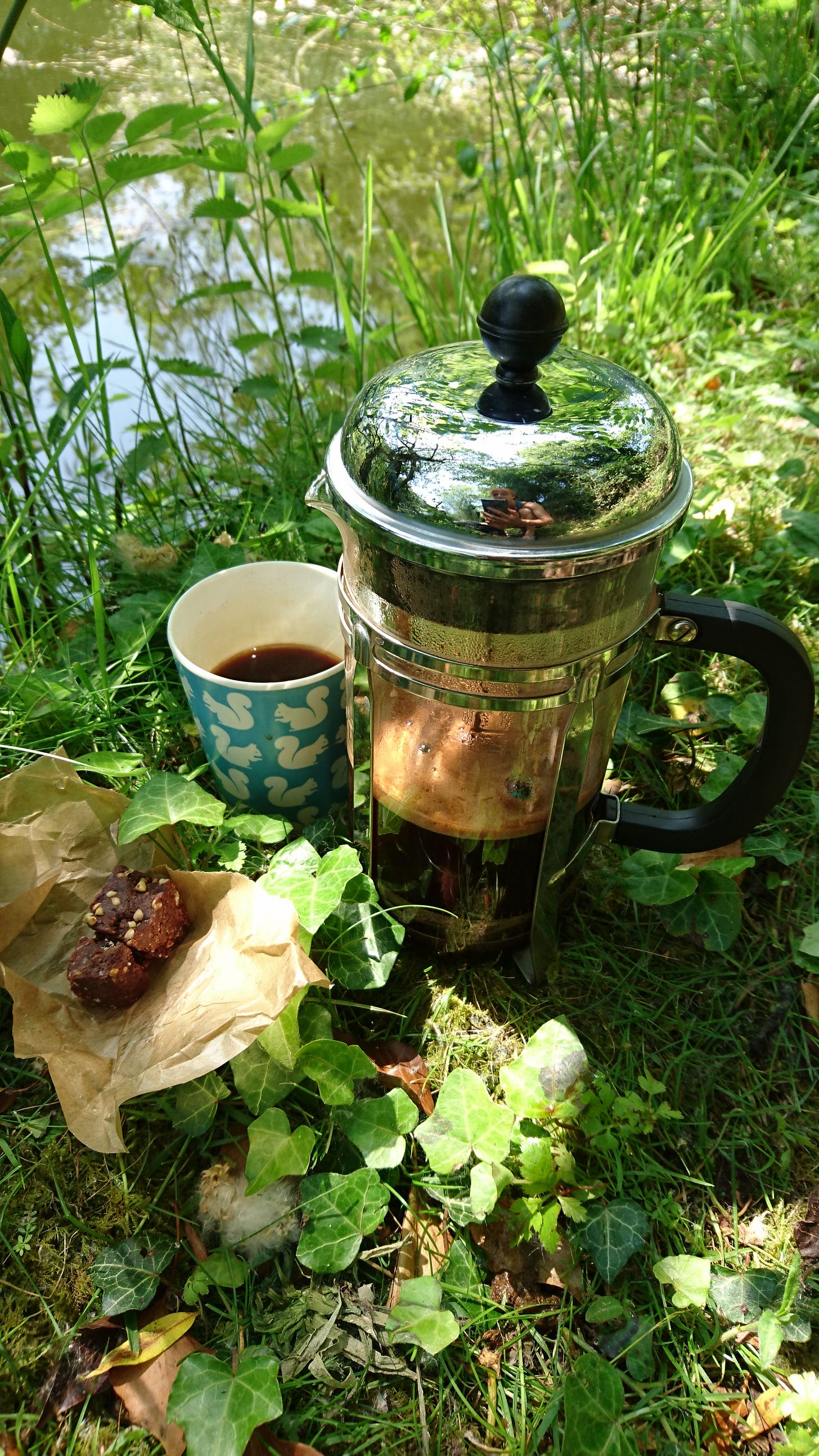
A beautiful post of land and sea connections as always Imogen, I love reading what you write. Thank you.
I am glad that your childhood dream is manifesting itself and your subscribers are the lucky beneficiaries.
I often wonder about blackbirds. Like you, I have a returning blackbird and her mate. I have often wondered if blackbirds are another bird that mates for life? Each year I see a patient father blackbird encouraging his fledgling to fly. Apparently because they are ground feeders the fledglings fly or tumble to the ground and then the male blackbird watches over them, encouraging them to take of from the ground - at least that’s what my neighbour told me. Maybe we just have clumsy blackbirds!Certainly most years I hear the chirps and squabbles between them before the fluffy fledgling gets the idea and flys away.
I adore the various May moon names too.
I always call the Sagittarius moon in Gemini (not always in May of course)Potent moon because for me that seems to encompass its energy of fire and air elements.
Thank you for all your wonderful writing, it cheers me up no end when they arrive. xx
I’m reading this after watching your latest video Imogen, where you talked about your blackbird mamma. The piece you’ve written here mirrors my own experience with ‘Betty’, my friend and companion for the last four years! What very special birds they are. Betty raised several broods a year and we got to know each other during the silence of lockdown, when she would sit with me as I potted up seedlings, hoping for some mealworms. Your description of your blackbird and your love for her had me in tears, because I know that feeling! Betty would hop into my kitchen if I wasn’t quick enough with the bird food. I miss her so much, but I left notes and food for the new owners of my house. As for your newsletters, I enjoy everything you write - short or long - so as long as it brings you joy, please carry on! ❤️